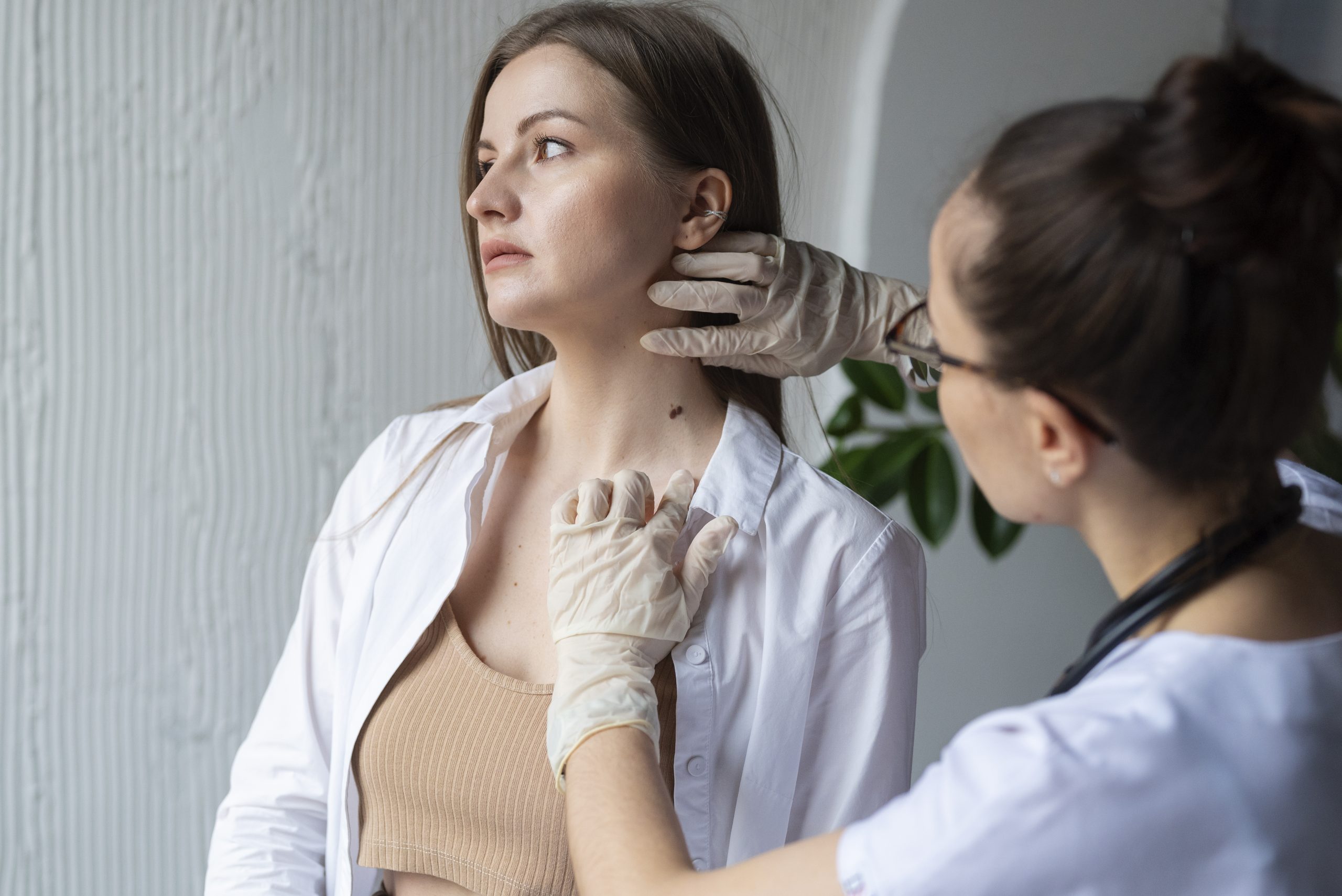Introduction
Skin cancer is one of the most common forms of cancer, but it is also one of the most preventable. As we spend more time in the sun and under harmful UV rays, it’s crucial to raise awareness about the risks of skin cancer and how to protect your skin and overall health. In this blog, we’ll discuss skin cancer, its types, risk factors, and most importantly, how you can protect yourself from this potentially deadly disease.
Understanding Skin Cancer
Skin cancer occurs when there is an uncontrolled growth of abnormal skin cells. There are three primary types of skin cancer: melanoma, basal cell carcinoma, and squamous cell carcinoma.
- Melanoma is the most dangerous form of skin cancer, as it can spread to other parts of the body if not treated early.
- Basal cell carcinoma is the most common type, usually found on areas exposed to the sun.
- Squamous cell carcinoma is also often found on sun-exposed areas, and while less aggressive than melanoma, it can still be harmful.
Risk Factors
Certain factors increase the risk of developing skin cancer. These include:
- Prolonged sun exposure: Spending too much time in the sun, especially without protection, can damage your skin and increase the risk of skin cancer.
- Fair skin: People with fair skin are more susceptible to skin cancer because they have less melanin, which offers natural protection against UV radiation.
- Family history: A family history of skin cancer can increase your risk.
- Sunburns: Repeated sunburns, especially during childhood, can significantly elevate your risk.
- Weakened immune system: A compromised immune system, whether due to medical conditions or medications, can increase susceptibility.
Prevention Strategies
a. Sunscreen: Use a broad-spectrum sunscreen with SPF 30 or higher when going outside. Reapply every two hours or more frequently if swimming or sweating.
b. Protective clothing: Wear long sleeves, a wide-brimmed hat, and sunglasses to shield your skin and eyes from UV radiation.
c. Seek shade: Avoid direct sunlight during peak hours (10 a.m. to 4 p.m.) when UV radiation is strongest.
d. Regular self-exams: Check your skin regularly for any changes, such as new moles, growths, or spots that change in size, shape, or color.
e. Annual skin exams: Visit a dermatologist for a professional skin examination at least once a year. Early detection is crucial in treating skin cancer effectively.
f. Avoid tanning beds: Indoor tanning can be just as harmful as natural sunlight, and it increases the risk of skin cancer.
Promote Awareness
Educate your family, friends, and community about the importance of skin cancer awareness. Share information about risk factors, prevention, and early detection. Encourage regular skin check-ups and the use of protective measures.
Conclusion
Skin cancer is a serious health concern, but by taking proactive steps to protect your skin and promoting awareness, you can reduce your risk and potentially save lives. Remember that prevention is the best defense, and early detection is key. By following the tips in this blog and spreading the word, you can contribute to a healthier and safer future for yourself and those you care about. Stay sun-safe and protect your skin and health.




Add comment